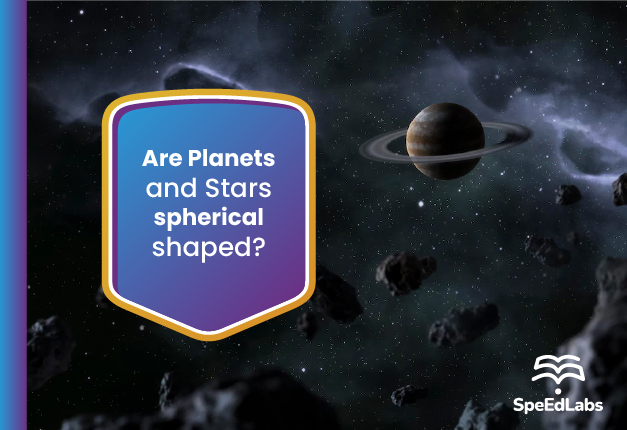We have till now relied on the conventional notion about the shapes of planets and stars, but are we sure about their shapes at all?
Are stars star-shaped?
Whenever we are asked to draw stars, we draw the typical star shape. However, have you ever wondered what the actual shape of stars is? Most stars are similar to the Sun in that they are massive balls of gas that burn billions of miles away. These spherical stars emit a steady stream of light that crosses vast swaths of space before illuminating the night sky. Down here on Earth, however, stars appear as gently twinkling stars rather than unwavering and blazing spheres of plasma.
Why is our perception of stars so skewed?
Stars twinkle for a simple reason: the movement of air in Earth’s atmosphere can temporarily dim a star’s light. According to NASA, stars near the horizon appear most twinkly because “there is a lot more the atmosphere between you and a star near the horizon than between you and a star higher in the sky.”
However, what about the pointed star shape that stars are known for? The science behind it is fascinating, and it has less to do with the stars, Earth, or space than it does with us.
Planets must be round: Or maybe not!
Our solar system’s eight planets differ in a variety of ways. They are of various sizes. They are separated by a significant distance from the sun. Others are large and gassy, while others are small and rocky. They are all nice and round, though. What is the reason for this? Why aren’t they cubes, pyramids, or discs in shape?
Planets are formed when space material collides and clumps together. After a while, it has accumulated enough material to have a reasonable amount of gravity. That force holds everything in space together. A forming planet begins to clear its path around the star it orbits once it has grown large enough. It snags bits of space junk with its gravity.
The gravitational pull of a planet is equal on all sides. Like the spokes of a bicycle wheel, gravity pulls from the centre to the edges. As a result, a planet’s overall shape is a sphere, which is a three-dimensional circle.
But are they all perfect?
While our solar system’s planets are all nice and round, some are rounder than others. Mercury and Venus are the most spherical of all the planets. They resemble marbles in that they are nearly perfect spheres.
However, not all planets are perfectly round.
In the middle, Saturn and Jupiter are a little thicker. They bulge out along the equator as they spin around. What causes this to happen? To keep up with a spinning object, such as a planet, things on the outside must move faster than things on the inside. Anything that spins, such
as a wheel, a DVD, or a fan, falls into this category. Things near the edge must travel the greatest distance and at the greatest speed.
Gravity holds the edges in along a planet’s equator, a circle halfway between the north and south poles, but as it spins, stuff wants to spin out like mud flying off a tyre. Even though Saturn and Jupiter are enormous and spin at a high rate, gravity manages to keep them together. That
is why they have a bulge in the centre. The extra width is known as the equatorial bulge.
Saturn has the largest bulge of any planet in our solar system.
When you compare the diameters of the poles to the diameters along the equator, you will notice that they are not the same. Saturn’s middle is 10.7% thicker than the rest of the Planet. Jupiter’s middle is 6.9% thicker than the rest of the Planet. They resemble basketballs squished down while someone sits on them, rather than being perfectly round like marbles.
Earth and Mars are small and spin at a slower rate than the gas giants spin. Although they are not perfect spheres, they are rounder than Saturn and Jupiter. The middle of the Earth is 0.3 per cent thicker, while the middle of Mars is 0.6 per cent thicker. It is safe to say they are very round because they are not even one percentage point thicker in the middle.
Uranus and Neptune, on the other hand, are in the middle. The middle of Uranus is 2.3 per cent thicker than the rest of the planet. Neptune is 1.7 per cent thicker than Uranus. They are not exactly round, but they come close.
Also published on Medium.
